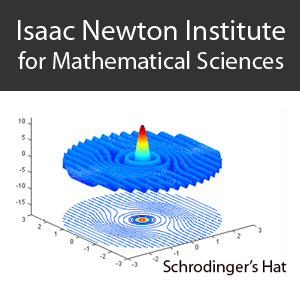A wave equation based Kirchhoff operator and its inverse
33 mins,
137.48 MB,
Flash Video
484x272,
29.97 fps,
44100 Hz,
568.8 kbits/sec
Share this media item:
Embed this media item:
Embed this media item:
About this item

| Description: |
ten Kroode, F (Shell International Exploration and Production)
Thursday 15 December 2011, 15:30-16:00 |
|---|
| Created: | 2011-12-19 10:54 |
|---|---|
| Collection: | Inverse Problems |
| Publisher: | Isaac Newton Institute |
| Copyright: | ten Kroode, F |
| Language: | eng (English) |
| Abstract: | In seismic imaging one tries to compute an image of the singularities in the earth's subsurface from seismic data. Seismic data sets used in the exploration for oil and gas usually consist of a collection of sources and receivers, which are both positioned at the surface of the earth. Since each receiver records a time series, the ideal seismic data set is five dimensional: sources and receivers both have two spatial coordinates and these four spatial coordinates are complemented by one time variable.
Singularities in the earth give rise to scattering of incident waves. The most common situation is that of re flection against an interface of discontinuity. Refl ected and incoming waves are related via refl ection coefficients, which depend in general on two angles, namely the angle of incidence and the azimuth angle. Re flection coefficients are therefore also dependent on five variables, namely three location variables and two angles. The classical Kirchhoff integral can be seen as an operator mapping these angle-azimuth dependent refl ection coefficients to singly scattered data generated and recorded at the surface. It essentially depends on asymptotic quantities which can be computed via ray tracing. For a known velocity model, seismic imaging comes down to nding a left inverse of the Kirchhoff operator. In this talk I will construct such a left inverse explicitly. The construction uses the well known concepts of subsurface offset and subsurface angle gathers and is completely implementable in a wave equation framework. Being able to perform such true amplitude imaging in a wave equation based setting has signifficant advantages in truly complex geologies, where an asymptotic approximation to the wave equation does not suffice. The construction also naturally leads to a reformulation of the classical Kirchhoff operator into a wave equation based variant, which can be used e.g. for wave equation based least squares migration. Finally, I will discuss invertibility of the new Kirchhoff operator, i.e. I will construct a right inverse as well. |
|---|---|
Available Formats
| Format | Quality | Bitrate | Size | |||
|---|---|---|---|---|---|---|
| MPEG-4 Video | 640x360 | 1.84 Mbits/sec | 457.68 MB | View | Download | |
| WebM | 640x360 | 778.7 kbits/sec | 187.83 MB | View | Download | |
| Flash Video * | 484x272 | 568.8 kbits/sec | 137.48 MB | View | Download | |
| iPod Video | 480x270 | 506.3 kbits/sec | 122.37 MB | View | Download | |
| MP3 | 44100 Hz | 125.03 kbits/sec | 30.02 MB | Listen | Download | |
| Auto | (Allows browser to choose a format it supports) | |||||

